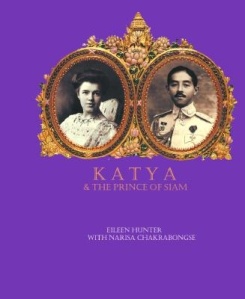January 1, 2012
More on Thai Literature
Posted in Susan's Blog tagged Democracy Shaken and Stirred, Dorkmai Sot, Four Reigns, King Rama VI, Kukrit Pramoj, Noblesse Oblige, Thai authors, Thai Literature, Thai novel at 7:55 am by Susan
 Following on from last month’s blog about Thai literature, I asked Thai scholar Verita Sriratana if she could answer a few more questions. I began by asking her about the current literary scene in Thailand. Here are her thoughts:
Following on from last month’s blog about Thai literature, I asked Thai scholar Verita Sriratana if she could answer a few more questions. I began by asking her about the current literary scene in Thailand. Here are her thoughts:
‘This is difficult, particularly because I have been studying abroad for the past four years, but from what I can observe from afar, Thais are spending more time in front of the TV and computer monitor than reading actual books! The types of publication we tend to read are newspapers (both electronic and print form), magazines, historical non-fiction, how-to books, and novels. Thai novels by Thai authors and novels in translation, in particular, are often featured in our bookstores. Film tie-ins are also widely read.
One of the most prestigious literary awards in Thailand is the SEA WRITE awards (Southeast Asian Writers Awards), presented annually since 1979. These awards are given to writers of both poetry and prose from each Southeast Asian country. Books by Thai authors who are nominated for the award enjoy immediate public attention since they they are widely reviewed and discussed in our media.’
Are there any interesting trends in Thai writing you can identify?
‘Thai people are fascinated by history. I remember how I enjoyed reading historical fiction and memoirs written by certain royal family members in my aunt’s small library when I was growing up. We Thais are extremely proud of our history, language, and cultural heritage. Nostalgia is the mood and “atmosphere” which often pervades the pages of a book and the cinema screen. Historical fiction is, I would say, our “cup of tea,” our kind of genre and trend of writing.’

What British literature is known in Thailand?
‘Canonical British literature in translation is widely read and widely circulated in Thailand. King Rama VI (1881-1925) translated three Shakespeare plays: The Merchant of Venice, As You Like It and Romeo and Juliet. I remember that King Rama VI’s translation of The Merchant of Venice was one of the compulsory texts when I was in school.’
Is Virginia Woolf known in Thailand?
‘Before Michael Cunningham’s novel The Hours was published in translation, Virginia Woolf had been studied and discussed only in our English departments. After The Hours became a hit both on the cinema screen and in bookstores, I think people generally became more interested in and intrigued by Woolf’s life. Sadly, most people still perceive her as a mad writer who walked down a river in England with pockets full of stones. Her works are not very well-known among general readers. Mrs Dalloway is the only text among Woolf’s prodigious output which has been translated into Thai (in 2007).’

What Thai literature (in translation) would you recommend reading?
ผู้ดี (Phu Dee) or Noblesse Oblige by Dorkmai Sot (1905-1963)
Published in 1937, this is one of the very first novels of manners. Thailand is a class-based society. Its renowned patronage system, the legacy of our recent absolute monarchy past (which ended only in 1932), is succinctly captured in this book.
สี่แผ่นดิน (See Paen Din) or Four Reigns by Kukrit Pramoj (1911-1995)
This is probably the most famous Thai historical novel. It is the life story of a female character named Mae Ploy who lived through four reigns, from the time of King Rama V (1853-1910) to King Rama VIII (1925-1946).
ประชาธิปไตยบนเส้นขนาน (Prachatipatai Bon Senkhanan) or Democracy Shaken and Stirred by Win Lyovarin (1956- )
This is a piercing investigation into the true meaning (or, rather, lack of meaning) of “democracy” in Thailand. The book won the SEA Write Award in 1997 and Thailand’s National Book Award in 1995. It has now been included in the recommended reading list for students of Political Science in most universities in Thailand. See this summary.’